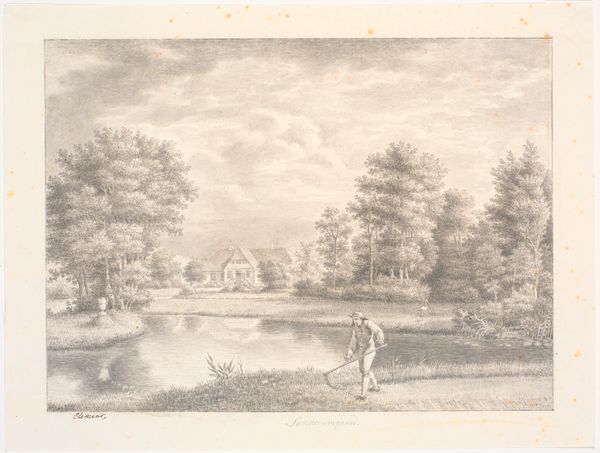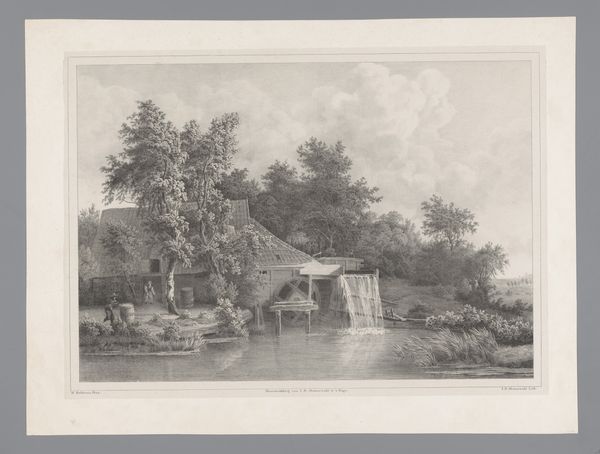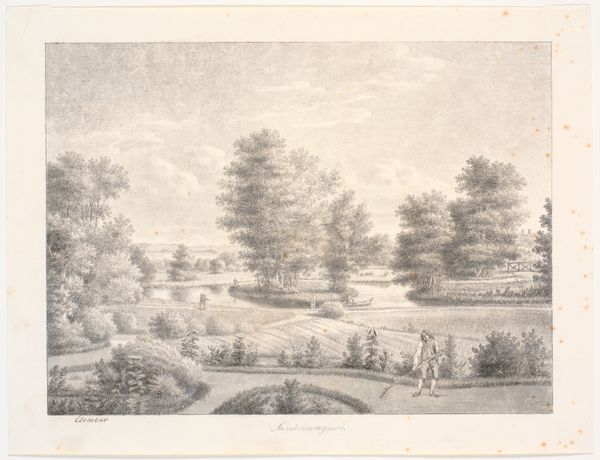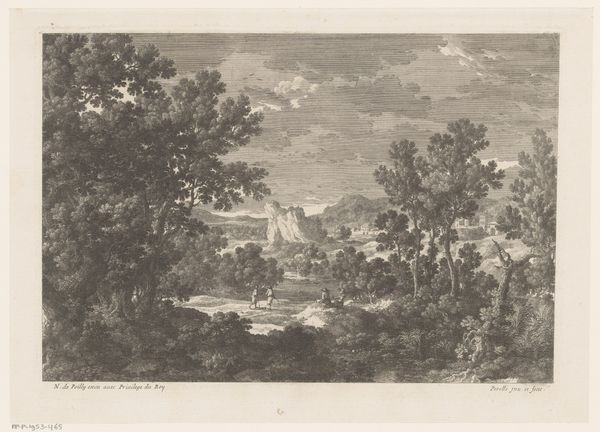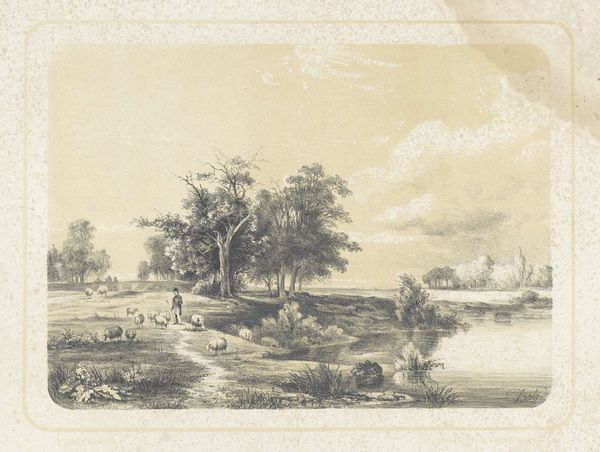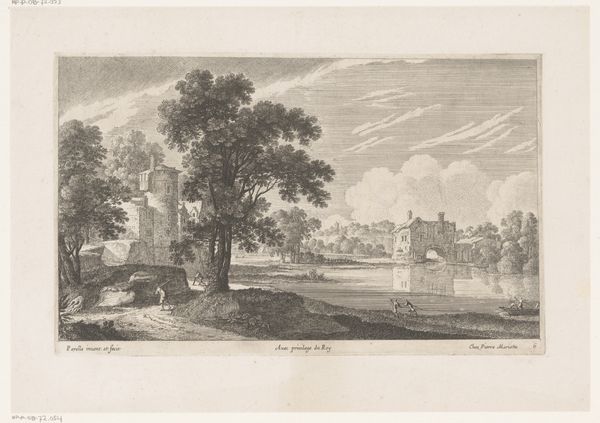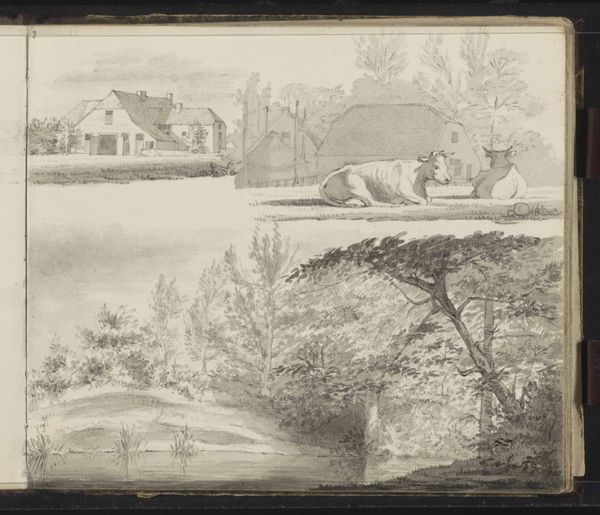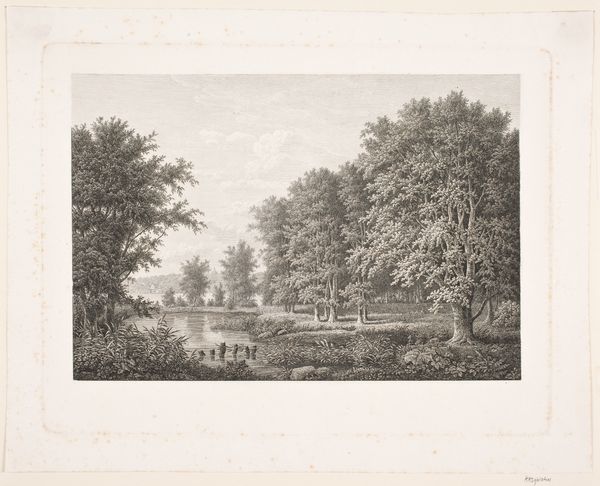
Sanderumgaards have med regnbue. I forgrunden to mænd ved en låge 1803
0:00
0:00
drawing, etching, pencil
#
drawing
#
neoclacissism
#
etching
#
landscape
#
pencil
Dimensions: 248 mm (height) x 334 mm (width) (bladmaal)
Editor: So, this is "Sanderumgaard Have med regnbue. I forgrunden to mænd ved en låge" by J.F. Clemens, created in 1803, using pencil and etching. It has a distinctly pastoral, almost utopian feeling. What strikes you most about this print? Curator: Considering this print through a materialist lens, I find myself drawn to the means of its production. The combined use of pencil and etching, both demanding processes, speaks volumes about the labour involved in creating such imagery, right? What level of skill would be expected in the labour to create these objects? Editor: Definitely a high degree of skill to work in both drawing and etching! It does make me consider the division of artistic labour at the time. Curator: Exactly! And the paper itself, a processed material, brings another layer to the discussion. What was the role of the paper mills at that time? What processes did they undergo to reach their quality? Consider also how the availability of these materials influenced artistic output. Was there even a standardized paper size? Editor: That’s something I hadn’t really thought about. So, the choice of etching itself suggests a wider audience, through reproducible prints. Was this to make art more accessible to a wider range of the public for political purposes? Curator: Precisely. Think about how such imagery might have served to reinforce or even challenge social structures through this sort of art ownership, and by owning an image like this what status might one project on to another? Editor: Looking at it that way, the print becomes less about the idyllic scene itself, and more about the social and economic factors that enabled its creation and dissemination. Curator: It prompts us to reconsider traditional hierarchies of value in art, by focusing on materiality and social implications of it, which may even redefine the artist's status. Editor: Absolutely, viewing art through a materialist perspective offers fresh insights and pushes us to look past aesthetic pleasure! Curator: Agreed, I think it adds richness and expands how we value such artwork, shifting us from simply viewing an art object to grasping how it functioned in society.
Comments
No comments
Be the first to comment and join the conversation on the ultimate creative platform.
